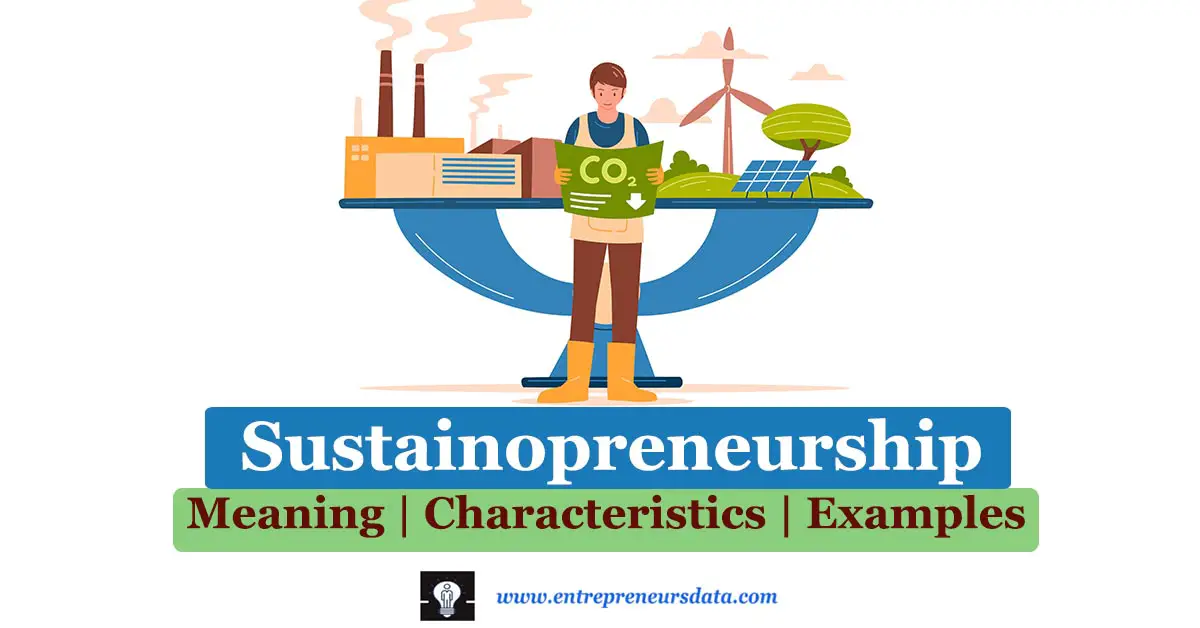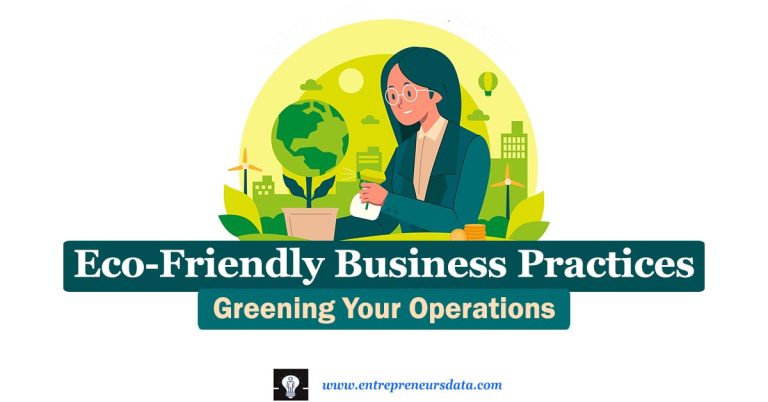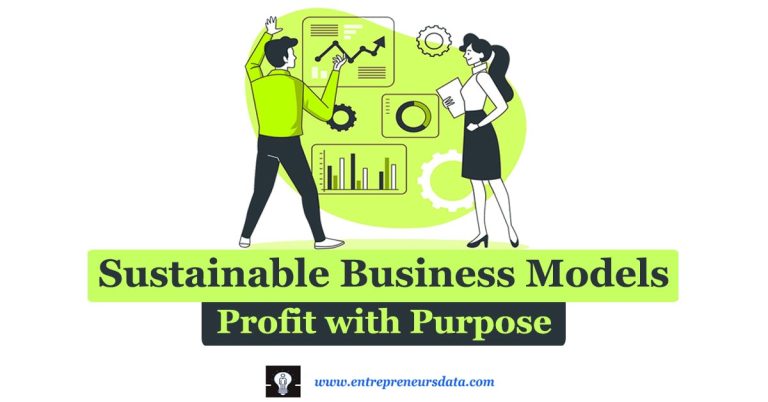Sustainopreneurship: Meaning, Characteristics & Examples – Many new entrepreneurship fields have emerged, such as technopreneurship, ecopreneurship, social entrepreneurship, and so on. Today, sustainable entrepreneurship (SE) or Sustainopreneurship is an emerging field of entrepreneurship. Let’s discuss sustainopreneurship through this article.
Sustainopreneurship Meaning
Sustainopreneurship Meaning– Entrepreneurship has been identified as a method for generating economic gains. However, because the concept of sustainable development has emerged as a major problem affecting the existing global economy, it has been suggested that entrepreneurship should not be oriented exclusively on making wealth. This resulted in the birth of the concept of sustainable entrepreneurship, which has gained a lot of attention in the recent decade.
Entrepreneurship is defined as an economic activity that capitalizes on “market failures,” such as unfulfilled market needs and underdeveloped markets, to earn a profit. As a result, the ability to solve environmental problems is “built” into the fundamental definition of entrepreneurship. As a result, SE is thought to have significant capability to address major sustainability concerns and promote sustainable green growth, while preserving strong competitiveness and generating economic and social benefits to stakeholders.
The primary difference between entrepreneurship and sustainopreneurship is their focus on mission and cause. It is a creative, market-oriented, and personality-driven method of creating value through ecologically or socially beneficial ideas and products.
Sustainopreneurship is simply an expression of long-term innovation targeted at benefiting a large portion of society. Sustainable entrepreneurship is defined as the use of corporate organizations to solve social and environmental concerns. This notion is firm to transform the world’s issues into business opportunities through the implementation of sustainable solutions.
Sustainable entrepreneurship considers who finds out, creates, and exploits chances to actualize future goods and services, as well as the economic, psychological, social, and environmental repercussions. Taking into account the social benefits of environmental initiatives (for example, reduced pollution improves residents’ quality of life and health), the economic benefits of a successful venture, and the positive impact of entrepreneurship, the three aspects of entrepreneurship sustainability are: economic, social, and environmental. Sustainable enterprise, as a concept with objectives and aims, generates more than just wealth.
Firm sustainability-oriented innovation, according to a recent study, also generates collective benefits; this sort of innovation attempts to:
1. Reduce the negative outcome or increase the good outcome for gathering various company activities above the regulatory levels.
2. Meet the needs of each specific target market with modes (distribution modes, products, and services) that have a major positive impact on the community.
3. To increase the social and environmental impact of other economic entities’ operations, such as distributors, supply chain partners, and end customers.
4. Drive the gradual improvement of reference values for all operatives who must work on environmental and social challenges.
Leading sustainability companies display high levels of proficiency in taking on global and industry challenges in a range of areas. To begin, they include long-term environmental, economic, and social concerns in their business strategies while maintaining worldwide competitiveness and brand recognition in terms of innovative approaches. Second, in the financial sphere, shareholders’ demands for stable financial returns, long-term economic growth, open communication, and transparent financial accounting are met.
Read – Modern Entrepreneurship
Elkington’s 1998 proposal for sustainability and the triple bottom line. According to that, the basic concept of the triple bottom line is economic, environmental, and societal sustainability. A company’s capacity to manage its capital and assets is the first step toward its survival and possible sustainability, also known as economic sustainability. Environmental sustainability refers to a company’s ability to function without harming the environment or emitting excessive amounts of hazardous emissions. The social sustainability component of the business is the obligation for organizations to change and adhere to the needs of stakeholders that correspond with the company’s value systems.
SE’s purpose is to protect nature, life support, and community while pursuing perceived chances to create future products, processes, and services for profit. Profit in this context is generally defined to cover both economic and non-economic gains to individuals, the economy, and society.
Definition of Sustainable Entrepreneurship
Several authors have defined sustainable entrepreneurship, some of whom are:
1. Entrepreneurs or persons or organizations that are sustainability-focused within their primary business and contribute to sustainable development are referred to as sustainable entrepreneurs – Schaltegger; Wagner, 2011.
2. Sustainable entrepreneurship is a business creation process that connects entrepreneurial operations to the fulfillment of social and environmental goals that have long-term value – O’Neill et al., 2009.
3. A procedure for spotting, evaluating, and seizing opportunities to produce beneficial new goods, services, and values – Maijd and Koe.,2012.
4. Numerous types of market implications lead to pollution – Cohen and Winn, 2007.
5. Abrahamson claims that there are three ideas involved in sustainable entrepreneurship, also known as sustainopreneurship – Majid, &Koe, 2012.
1. Seeking, discovering, and/or developing innovations to address sustainability-related issues.
2. Through innovative organizing, solutions can be brought to market.
3. Adding value to sustainability by respecting life support systems.
6. Focusing on the protection of the environment, human life, and community in seeking perceived opportunities to develop new goods, methods, and services for profit, where profit is typically defined to encompass both monetary and non-monetary gains for people, the economy, and society. – Shepherd &Patzelt; 2011
Read – Barriers to Creativity
Sustainable Entrepreneurship vs Sustainable Innovations
In rather hazy and broad words, sustainable innovation is defined as the outcome of the innovation process that demonstrates sustainability or innovation that enhances the firm’s sustainability performance. Recent studies emphasize the three-pillar model of sustainability and define sustainable innovation as the introduction or acceptance of a product, method, organization, or system that takes into account the social, environmental, and economic components of sustainability.
The commercial introduction of a new or improved product or service, product service system, or pure service that, based on a traceable (qualitative or quantitative) comparative analysis, results in environmental and/or social benefits over the physical life-cycle of a prior version is referred to as “sustainable innovation.”
Sustainable entrepreneurship and sustainable innovation coexist and are mutually beneficial. Depending on the originality and complexity of the innovation, it may confront a variety of barriers to implementation.
Sustainable entrepreneurs are critical proponents of long-term development and a driving force behind SI. SI proved to be a key aspect of the firm’s long-term competitive advantage, as well as a crucial instrument for dealing with complex and systemic societal concerns that necessitate the right combination of creative approaches, ideas, and tools to change the status quo.
Sustainopreneurship Characteristics
Sustainopreneurship Brings Economic Benefits
Entrepreneurs’ views on natural resource challenges have shifted from sustainable development to wealth accumulation. Sustainable entrepreneurs can assist in transforming the present economy into a sustainable economy by filling the gaps left by businesses and governmental entities that provide vital social and environmental services. As a result, sustainable entrepreneurship generates sustainable business prospects that address sustainability challenges while also providing economic rewards.
Sustainopreneurship Part of Every Business Sector
Sustainopreneurship is broadly described as the innovative activity of participants in the context of sustainability, which includes governmental and non-governmental, profit and non-profit organizations. Because global environmental concerns are increasing by the day, every corporate sector is contemplating sustainable solutions. That is why it is present in all business sectors.
Helps to Achieve Sustainable Development
Simply said, sustainable development implies ensuring future generations’ resources in the present without harming them. Sustainopreneurship is increasingly acknowledged as a driving force for competitiveness, innovation, and entrepreneurial spirit, and is consequently seen as one of the most significant components in attaining sustainable development.
Path Way for Sustainable Innovations
Entrepreneurship is heavily reliant on innovation. There is no concept of entrepreneurship without innovation. There has never been a stronger drive for environmentally friendly products and technologies than now. Climate change has reached a tipping point, and many innovators and corporations are stepping forward to help build a cleaner future. Some fields of sustainable innovation include solar power plants, wind power, electronic automobiles, and organic farming.
Helps for Poverty Reduction
Sustainability initiatives, according to advocates, have a good chance of becoming driving forces in a worldwide conversion to poverty reduction since they add value while remaining true to the various characteristics of sustainability. To have a global impact, sustainability entrepreneurship will most likely need to arise in a wide range of settings, including many from both the developed and developing worlds that are not perceived as particularly entrepreneurial, such as high fixed-cost corporate settings.
Almost Similar To the Social Entrepreneurship Concept
Sustainopreneurship, also known as Sustainable Entrepreneurship, is the practice of running a firm that is concerned with social and environmental sustainability. It denotes “business with a purpose,” in which global issues are transformed into business opportunities through the implementation of sustainability solutions. It’s almost like social entrepreneurship.
Links to Many Entrepreneurial Concepts
Environmental entrepreneurship, green entrepreneurship, ecopreneurship, and social entrepreneurship are all subsets of sustainable entrepreneurship. However, while these concepts are not identical, they do have comparable attitudes toward making the world a better place to live.
Sustainopreneurship Examples
OceanEthix
OceanEthix is a Hong Kong-based seafood company that produces and sells seafood that is guaranteed to be hormone and antibiotic-free. They also assure the consumer that the technology used to preserve the coral from which the seafood is harvested is environmentally friendly.
Elvis and Kresse
Kresse and Elvis re-use old fire hoses from the London Fire Department that would otherwise be buried in the trash to make luxury products such as belts and bags, and they were founded on the philosophy of reusing and recycling. 50% of their profits are donated to charity, demonstrating real environmental and social sustainability.
Xinca
Xinca is an Argentine company that makes footwear and sandals out of recycled rubber tires and materials from various sources. One of the brand’s workplaces is the San Felipe jail in Mendoza, where 32 inmates are educated to create athletic shoes so that when they complete their term, they can continue to work for the company. This business initiative is intended not only to safeguard the environment but also to provide employment opportunities for persons who have had run-ins with the law and are typically turned down for most occupations.
Allergan
Allergan is a Botox firm based in California that has received the Environmental Protection Agency’s Energy STAR designation for sustainability measures. In 2016, the corporation launched a corporate responsibility plan to lead its efforts to reduce environmental impact. The initiative’s goals include reducing greenhouse gas emissions by 25%, reducing total waste by 8%, and engaging vendors and suppliers based on sustainability performance.
Biogen
Biogen focuses on the medical needs of people suffering from neurological and hematological illnesses, and it has implemented sustainability initiatives in its energy consumption. Since 2014, it has eradicated emissions from its electricity consumption and actively participates in carbon offsets. Since then, the company has focused on bringing green thinking to its chemistry to reduce emissions and the natural resources required to make prescription pharmaceuticals.
Conclusion
Entrepreneurship related to ecological well-being or environmental friendliness can simply call as sustainopreneurship. Through this article, we discussed different viewpoints and definitions of sustainopreneurship, or the term called sustainable entrepreneurship.
Then we discussed linking sustainable entrepreneurship and sustainable innovation. Then the characteristics of sustainable entrepreneurship. Brings economic benefits, part of every business sector helps to achieve sustainable development, a pathway for sustainable innovations, helps poverty reduction, similar to the social entrepreneurship concept, and links to many entrepreneurial concepts are some characteristics of it.
Finally, we bring some real-world examples of sustainopreneurship. So what are your views about sustainable entrepreneurship? Share your views with our readers in the comment section.









2 Comments